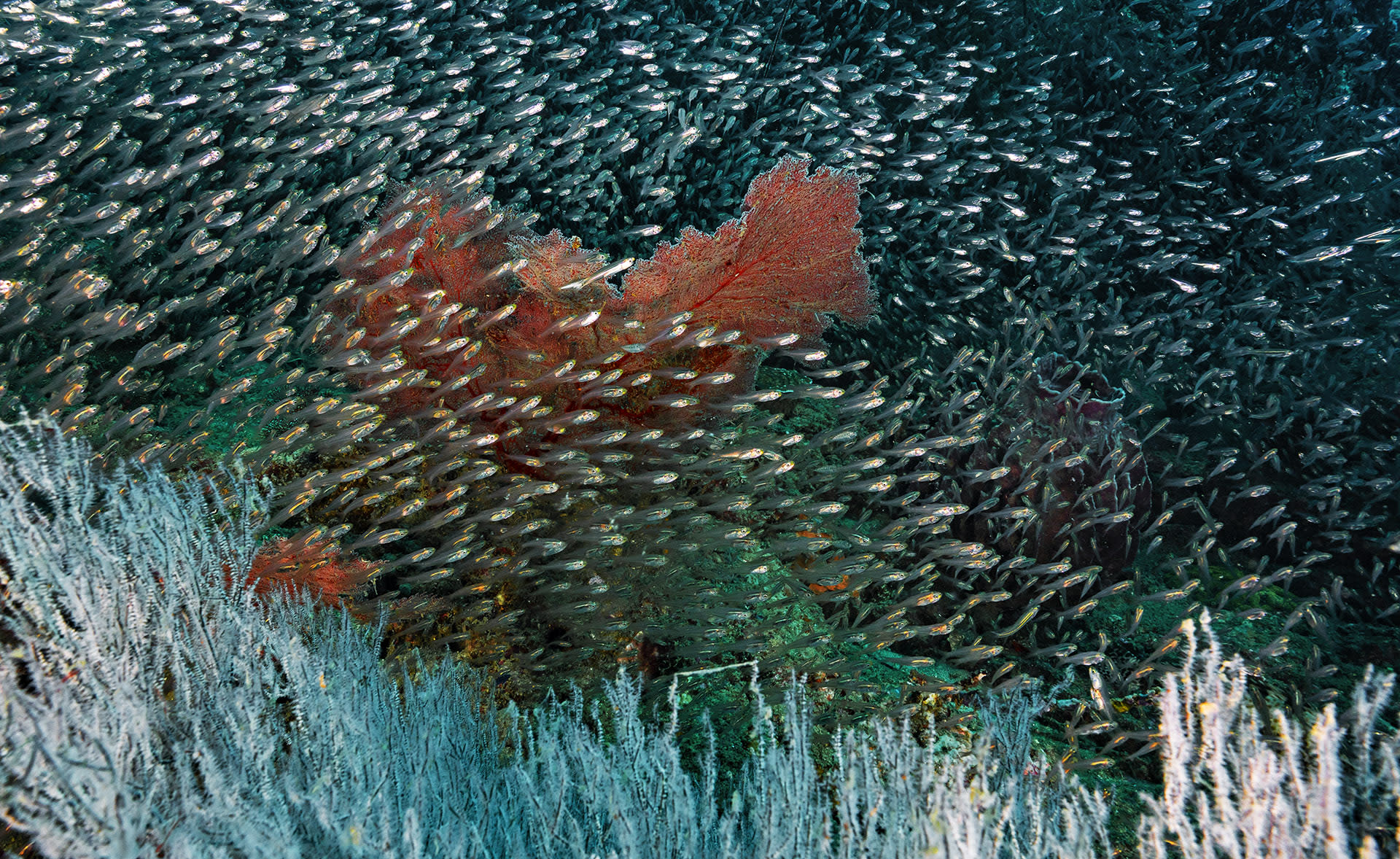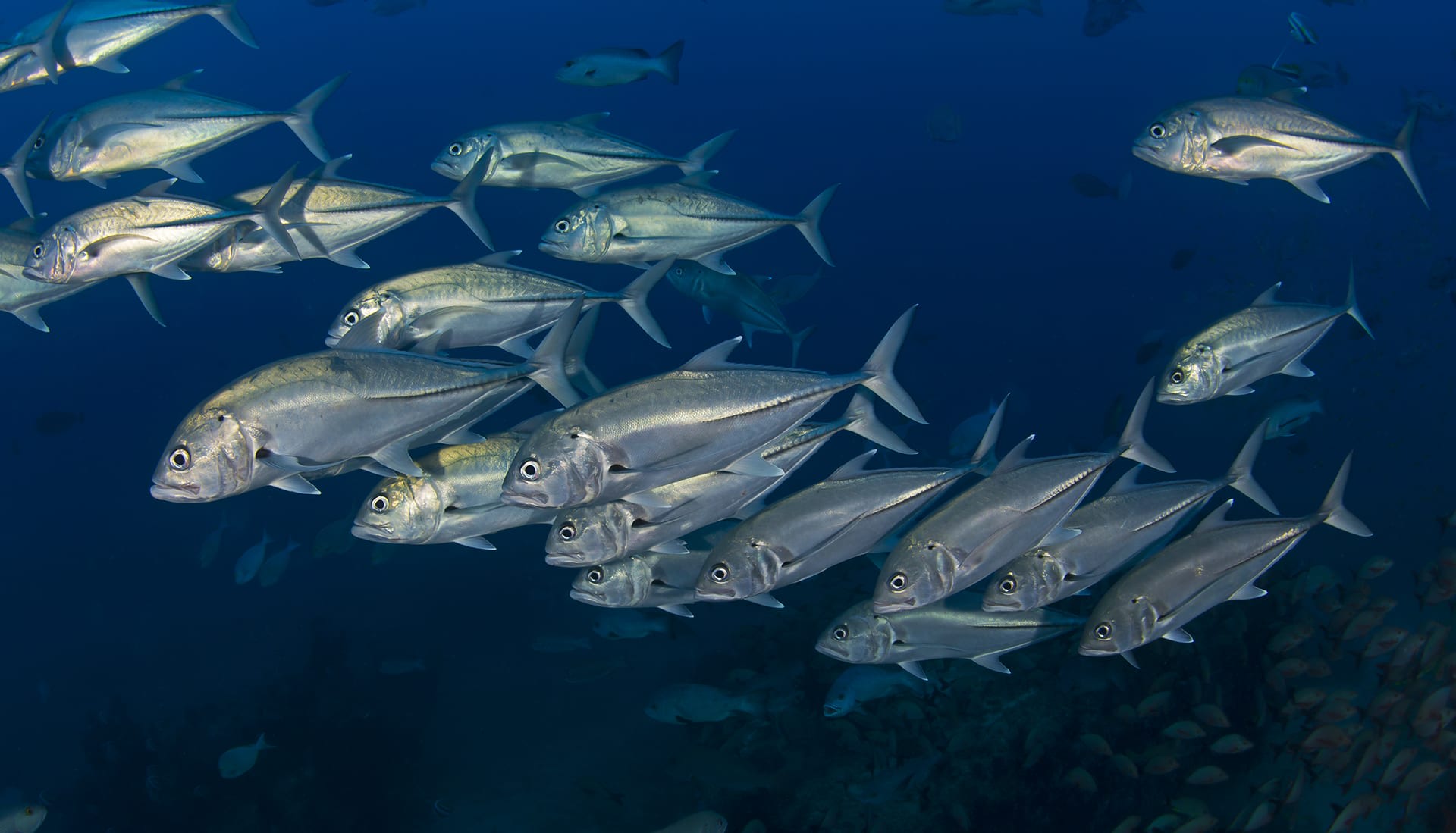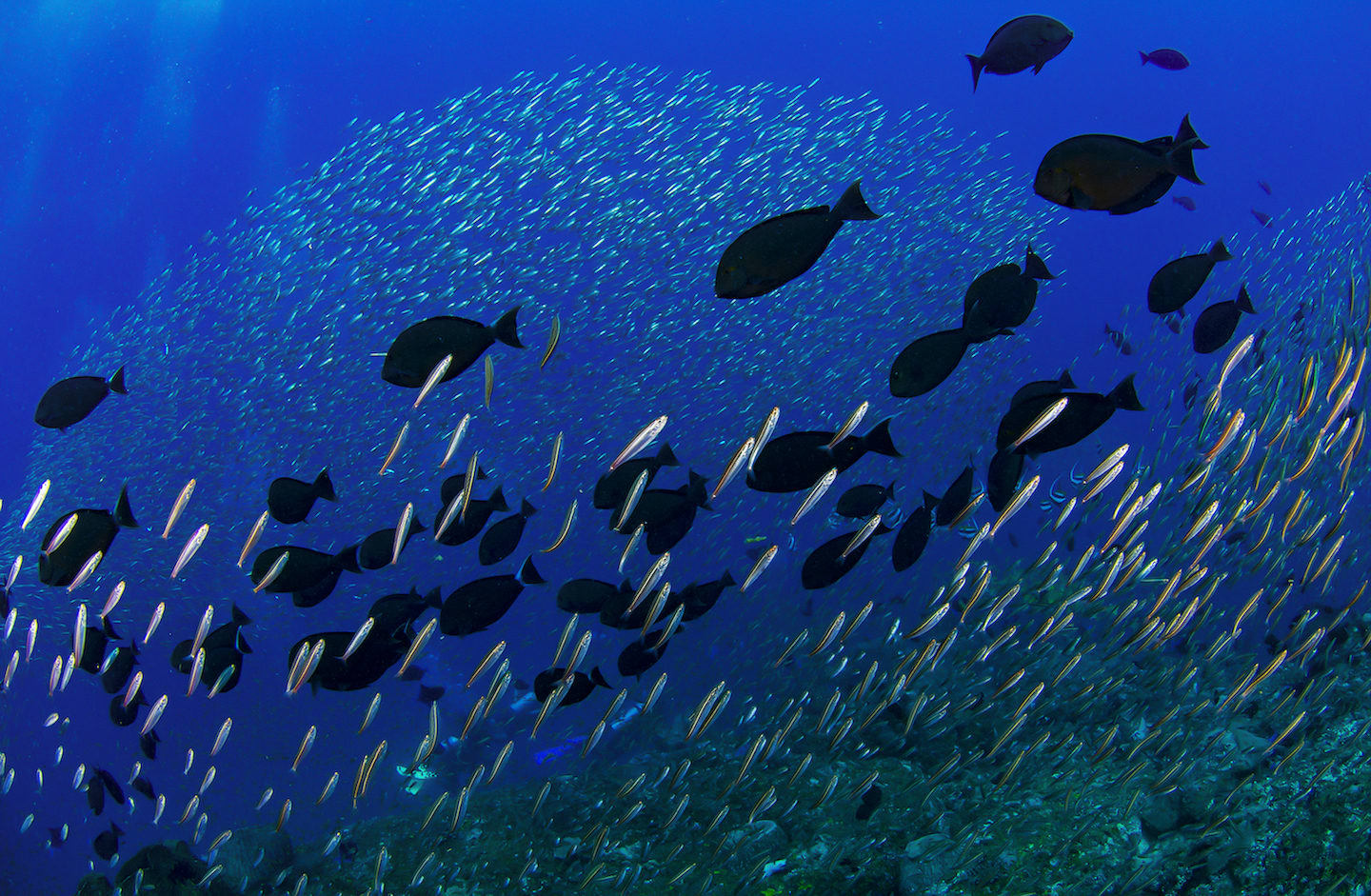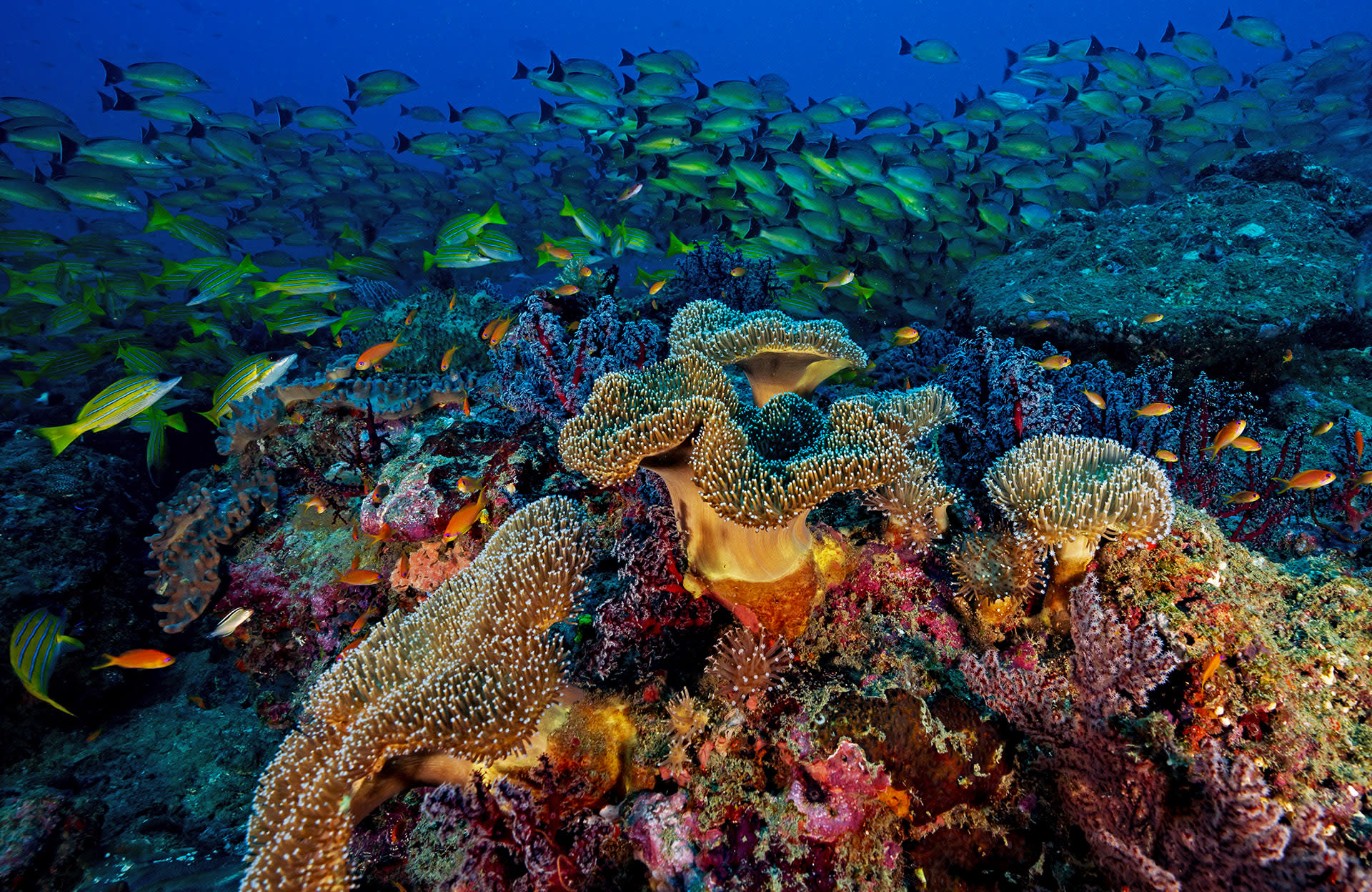Following fish aggregations in the Andaman Islands is a thrilling experience. Depending on the depth of the reef, time of tide, strength of the current and visibility underwater, you can be surrounded by hundreds, even thousands of fish. Or more. Groups of single or mixed species may be feeding, fleeing, hunting, or hiding, sometimes all at once. Flashes of bright colours dart below the water’s surface when you peep over the edge of a boat or stand on shore. Fish schools populate the entire water column as you descend to reefs, and large shoals will still fill your field of view if you decide to snorkel and stay shallow.

Snappers in the Andaman Islands are found in both shallow and deep reefs, assembling in schools that look like bright-coloured curtains. There is beauty in the fluid movements and dynamic patterns of fish, but what is not appreciated enough about the phenomenon of schooling is the sophisticated and evolutionarily well-oiled underlying mechanisms that run the show. Fishes swimming in schools are not an arbitrary group of individuals moving in arbitrary directions. They have strategies, preferences and navigation and communication systems. They have decisions to make; decisions that will ensure their survival but when made poorly, cost them their lives. Cover photo: When bait balls are lit by sunlight, they can look like a million pieces of shattered glass falling through the water.

Aggregating may not be for everyone, but for those who choose to come together, there are numerous benefits. Schools are typically tightly organised groups of fishes of similar ages or sizes that constantly maintain uniformity in speed and direction, ever so often breaking into relatively loosely held “shoals”, pairs, or solitary jaunts. Schooling behaviour may be instinctive, but there is still a lot of work to be done. Each individual has to constantly observe its environment and neighbours, mapping, calculating, evaluating in real-time. These unicorn fish are social not only with school neighbours, but often with divers whose bubbles they want to play with.

Watching schooling fish in action induces the same excitement as having a front-row experience at a live orchestra. The magic lies in the outstanding synchrony, achieved by everyone playing their part. The show gets progressively more powerful as more participants join in. Schools move in unison, polarised in fixed directions, with each fish matching its neighbour’s speed. Schools take on different shapes — tight spheres, marching lines, loose ovals, and crescent moons, depending on what drives them. Many types of schools have been decoded based on the shapes they take on. Some examples are: feeding schools, defensive look-around schools, resting schools, and schools evading solitary predators.

Why do fish school? The broad answer is that there is safety in numbers, a concept intuitive to them. Nearly 50 per cent of marine fish species will at some point in their lives join an aggregation. An underlying merit of moving in a school is more eyes on the lookout. More eyes ensure higher vigilance and ease of finding food. Another golden benefit of schooling is the significantly lower stress level that comes with not having to go through life alone.

The critical factor of “effort” lies at the heart of most trade-offs that fishes must evaluate when deciding to school. Swimming in a school takes less energy than swimming at similar speeds alone and it is thought to be one of the primary benefits of schooling. The laws of fluid dynamics confer a greater hydrodynamic advantage to those who move in groups: birds flying in a V formation, cyclists in a peloton, or barracudas (pictured here) swimming in a school. Fishes can save energy by swimming in the draft, or the low-pressure zones created by the movements of their neighbours.

Hunting for fish in a school puts a predator’s skills to the test. Imagine a sniper looking through the rifle scope trying to aim for one target in a rapidly moving, crowded sea of heads, tails, and fins. While schooling drops the risk of being found and eaten, it is also an advantageous strategy for predators. Predatory fishes have also figured out that schooling together, uniting their eyes and using them to hunt cooperatively, in exchange for splitting the harvest, can help them solve the problem of being outnumbered. Big-eye trevallies (seen here) form cooperative hunting parties to catch fusiliers, anchovies, and other forage fish in the Andamans. That is the beauty of coevolution, and the equilibrium between predator-prey, be it wildebeests and lions on land or anchovies and jacks in the ocean.

One of the most spellbinding scenes to observe underwater is the formation of a bait ball. Bait balls take place when predators (tunas, barracudas, jacks, sharks, dolphins, whales, birds among several others) anticipate and attack smaller plankton-feeding fish that aggregate in large numbers, typically at the site of
plankton blooms. Thousands or more forage fish (sardines, anchovies, silversides etc.) desperately ball up into smaller and tighter schools to protect themselves during a hunt. To eyewitnesses, bait balling will appear like a spectacular show, packed with sudden twists and turns, choreographed by fear and survival — a thrilling view of the dynamic oceanic food web in action.

Schooling fish have heightened senses. They depend on vision to clearly see their neighbours. Many also have conspicuous marks on their bodies that act as visual references. Like many aquatic vertebrates, schooling fish have evolved a sophisticated system of lateral line organs. Internally made up of a series of receptors called neuromasts and sensory hair cells, the lateral line is seen as a faint line that runs along the side of a fish from its gill covers until the base of its tail. The lateral line enables a fish to detect vibrations and changes in pressure gradients around it, which helps it detect movement and orient itself within a
school precisely.

One would imagine that owing to their seemingly perfect execution, a school has a leader with a plan, briefing all members about formations and routes beforehand. On the contrary, schooling fish work with information gathered from their immediate surroundings. This decentralised manner of operating is what ultimately emerges as a school. In the time that it takes us to wrap our heads around this phenomenon, a school of fish may well have taken and retaken numerous decisions on which direction to move; it is a collective of individual decisions made by assessing the actions of their nearest neighbours. In effect, fishes seem to follow a straightforward quorum rule: deciding what action to take based on what the growing majority around them chose to do.

Schooling fish choose their schools based on familiarity and experience with fellow schoolmates. Behavioural studies have shown that the bigger the size of the school, the more reliable quorum decisions are, and the safer the fish are. Small fish schools end up making more errors, jeopardising their safety. When removed from their schools, fishes can experience higher levels of stress. When we debate the scale at which we must conserve wildlife, we must also consider fish schools. One of the biggest threats to fish populations around the world is commercial fishing practices. Fishing that locates and targets fish schools for higher yields, disrupts the dynamics of this essential social behaviour in a way that is very difficult to rehabilitate. In essence, a school of fish acts as a superorganism that cannot function properly without its individual members. But the very survival of these individuals is at risk in the absence of the superorganism.

